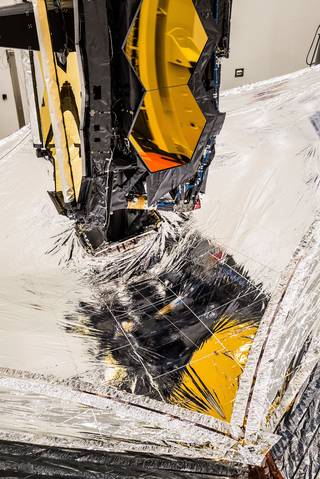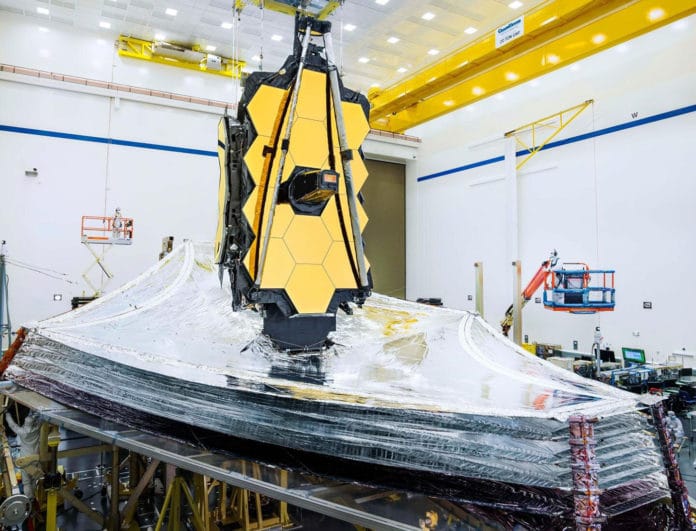The James Webb Space Telescope, also called Webb or JWST, promises to reach new heights for infrared astronomy. It will be the largest and most powerful telescope ever sent into space and will explore the open paths in the universe. It is planned to be the successor to the Hubble Space Telescope.
The telescope has recently passed a new fundamental test to preparing the observatory for its 2021 launch. Engineers and technicians successfully deployed and tensioned each of the sunshield’s five layers into its final form in space, putting it the same position it will be in a million miles from Earth.
The sunshield consists of five layers of a polymer material called Kapton, unfurled to the size of a tennis court. The layers are designed to keep the telescope cool in orbit and protect the observatory’s mirrors and scientific instruments from light and heat, primarily from the Sun. Being optimized for infrared light, it is essential that Webb’s optics and sensors remain extremely cold.

Each layer of NASA Webb’s Kapton sunshield are uniquely sized, shaped, and are coated with vapor-deposited aluminum, to reflect the Sun’s heat into space. The two most outer layers of the shield also have a “doped-silicon” coating to protect them from the Sun’s intense ultraviolet radiation.
This is not the first telescope test, but it is one of the most important. After confirming the success of the operation, the team members have already begun the long process of folding up the sunshield in its position for the flight. Subsequently, the observatory will undergo new electrical and mechanical tests, which will simulate the environment during the launch.
Thus the James Webb Space Telescope has become one step closer to the long-awaited launch. Webb telescope will solve the mysteries of our solar system, search for exoplanets and possible traces of life in the Universe, as well as perform many other tasks.
The launch of the telescope was postponed many times; now, it is planned to be completed in 2021.
